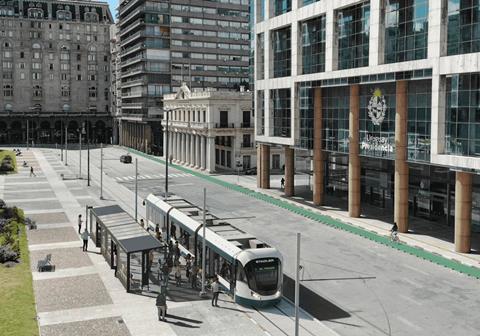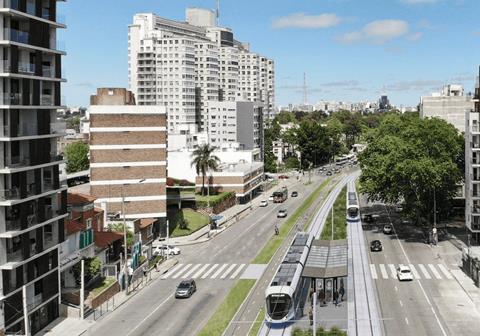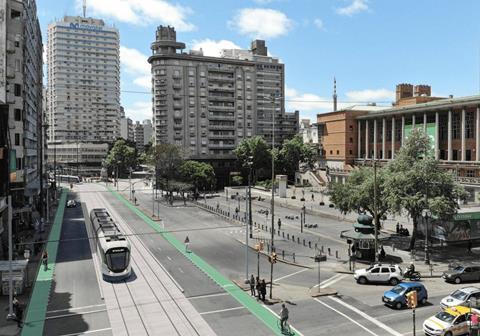
URUGUAY: The national government elected in the autumn is to ‘carry to an end’ Montevideo’s proposed tram-train project by the end of its term.
Local politician Francisco Legnani said he had agreed the plan with President-elect Yamandú Orsi. Uruguay held presidential elections in October and November last year, and the new government will formally come to power on March 1.
A 35 km light rail route has been proposed to link central Montevideo with El Pinar in the east by the ‘Three Eses’ consortium of Stadler Rail Valencia, Stiler and Saceem. The consortium is currently working on feasibility studies of the proposal.
The route would start in the capital’s historic centre and run along 18 de Julio, Italia and Giannattasio avenues through Ciudad de la Costa to El Pinar, serving 33 stops in the urban area along the coast. In June 2023, the government gave its backing to the development of a more detailed feasibility study at the consortium’s own expense.
It is envisaged that the line could be developed through a 25 to 30 year design, build and operate contract, which would be awarded through a competitive tender. The cost is estimated at US$500m, which would be financed through a public-private partnership agreement.

The light rail line is planned to be operated with tram-train vehicles, leaving provision for a future extension over existing main lines, such as the recently modernised Ferrocarril Central.
Competing BRT proposal
Last October, an alternative project was presented by the Centre for Economic Research think tank. This advocated development of two bus rapid transit corridors radiating from Plaza Independencia in the city centre. Like the light rail concept, one would run over a 30 km route to El Pinar, serving 48 stops. Another line would run to Zonamerica along the busy 8 de Octubre avenue, serving 41 stops on a 23 km alignment.
The project is estimated to cost US$528m, meaning the two BRT routes would have a similar combined cost to the sole light rail line.
Commitment to multimodality
In January, Legnani, who will represent the Canelones departamento which surrounds the capital, said that only the tram-train proposal had so far been formally presented to the Ministry of Transport & Public Works, the city of Montevideo and the Canelones local authorities.

‘The [programme of the winning coalition] Frente Amplio establishes the priority of starting to advance quickly on a strategic plan in the metropolitan area, and that it has to be multimodal, incorporating the different transport systems. Today 60% of the population is concentrated in the metropolitan area’, said incoming Transport Minister Lucía Etcheverry on December 18. It is a ‘priority’ both for the coalition and for President-elect Orsi to ‘move quickly on a strategic plan’ for mobility in the Montevideo area, she added.
- Subscribers can read a feature article about the light rail and BRT proposal for Montevideo in the January 2025 issue of Railway Gazette International.



